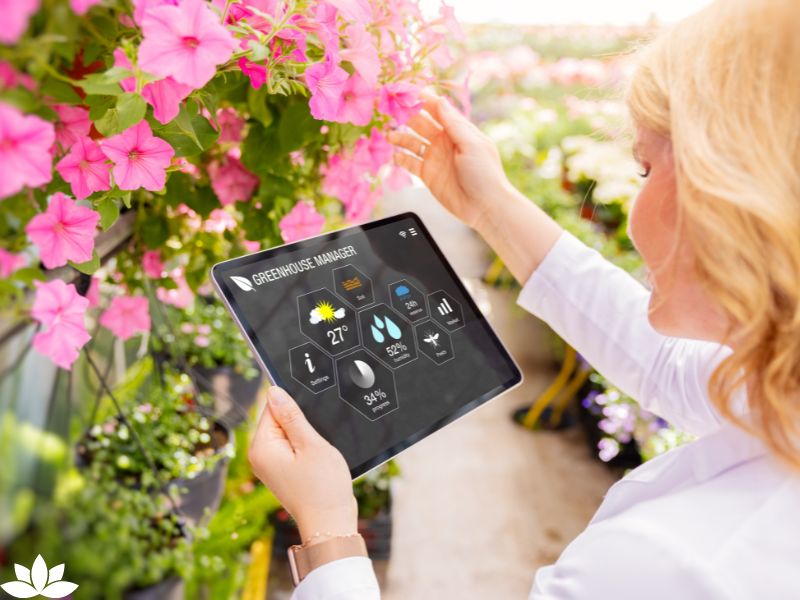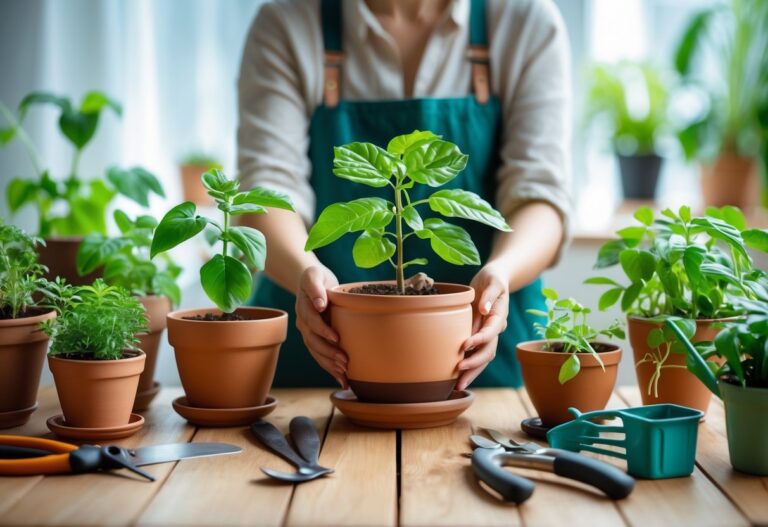Smart gardening represents an innovative approach that integrates technology with traditional gardening methods, offering numerous advantages for both novice and experienced gardeners. The concept revolves around utilizing devices and applications that enhance the gardening experience, making it more efficient and convenient. As the world evolves, so too do the practices that support our connection to the earth and nature.
One of the primary benefits of smart gardening is the increased efficiency it offers. Modern technology enables gardeners to automate various tasks such as watering, fertilizing, and monitoring environmental conditions. These systems often utilize sensors and timers, ensuring that plants receive the appropriate care without the need for constant supervision. This increase in efficiency not only saves time but also conserves resources, making gardening practices more sustainable.
Furthermore, smart gardening facilitates better monitoring of plant health. With the integration of smart devices, individuals can keep track of their plants’ growth and environmental conditions, such as soil moisture and light exposure, through a user-friendly interface. Some systems even allow real-time notifications about the needs of the plants, ensuring that gardeners can respond promptly to any issues that may arise. The ability to assess plant health from afar also makes it easier for those who might not have the time to tend to their gardens daily.
Additionally, smart gardening technology enables gardening enthusiasts to cultivate and maintain their gardens remotely. With mobile applications and internet connectivity, gardeners can adjust settings, check on their plants, and receive advice from experts, all from the comfort of their homes or while traveling. This capability significantly broadens access to gardening, encouraging more individuals to engage in this fulfilling activity.
In conclusion, embracing smart gardening means integrating technology into our gardening practices, ultimately enhancing efficiency, plant health monitoring, and remote accessibility. As we delve deeper into this guide, the importance of technology in contemporary gardening will be further underscored, paving the way for a greener future.
Choosing the Right Smart Gardening Tools

In the realm of modern gardening, selecting appropriate tools is pivotal for cultivating a thriving green space. Smart gardening tools have gained significant traction, offering innovative solutions that ease the process of gardening while enhancing productivity. Key gadgets include smart plant sensors, automated irrigation systems, and various gardening applications, each designed to cater to different needs and skill levels.
Smart plant sensors are among the most valuable tools for gardeners looking to ensure optimal plant health. These devices monitor crucial factors such as soil moisture, light levels, and temperature. For instance, products from brands like Xiaomi and Parrot provide real-time data, allowing gardeners to make informed decisions about watering and caring for their plants. By ensuring that plants receive the necessary conditions to thrive, these sensors significantly reduce the guesswork involved in gardening.
Automated irrigation systems are another essential component of a smart garden. These systems not only save time but also conserve water by delivering precise amounts of hydration directly to the roots. Options range from simple drip irrigation kits to sophisticated smart sprinklers that can be programmed and controlled via smartphones. Leading brands like Rachio and RainMachine offer models that integrate weather data, making them ideal for environmentally conscious gardeners who seek efficiency without sacrificing plant health.
Furthermore, gardening apps are increasingly popular, providing users with tips, reminders, and even community support. Applications like GrowIt! and Gardenize enable gardening enthusiasts to track their plants’ progress, share photos, and discuss techniques with fellow gardeners. With a user-friendly interface, these apps facilitate an engaging gardening experience that is ideally suited for both beginners and experienced gardeners alike.
In conclusion, investing in the right smart gardening tools can significantly elevate the gardening experience, allowing individuals to create a healthy and productive green space. By carefully comparing features and selecting tools that align with their specific needs and budget, gardeners can take their smart gardening endeavors to the next level.
Planning Your Smart Garden Layout
Creating an effective layout for your smart garden is a crucial step that can significantly influence the success of your gardening endeavors. Begin by assessing the available space in your outdoor area. Take into account not only the dimensions of the garden plot but also the varying sunlight conditions, wind patterns, and existing features such as trees, fences, or structures. Understanding these elements will enable you to maximize the use of your gardening space and ensure that each plant has the ideal environment for growth.
When selecting plants for your smart garden, consider their sunlight and water requirements. Grouping plants with similar needs together allows for more efficient watering and maintenance. For instance, consider placing sun-loving plants in areas that receive ample light while shade-tolerant varieties can be positioned under larger plants or structures. This strategic organization promotes healthy growth and minimizes competition among plants for resources.
Additionally, integrating smart tools into your garden layout can enhance convenience and efficiency. Smart irrigation systems, sensors, and automated devices help you monitor moisture levels and optimize water usage, resulting in a greener garden while simultaneously conserving water. Arrange these tools logically within your garden, ensuring that access to power sources and connectivity is straightforward. By strategically placing these devices, you can save time on daily gardening tasks, allowing you to focus more on enjoying your garden space.
Moreover, consider the overall design aesthetic of your smart garden. Paths, raised beds, and decorative elements can all contribute to a visually appealing layout. Incorporate native plants or those beneficial for pollinators to support local biodiversity. A well-planned garden layout sets the stage for not only a productive gardening experience but also an enjoyable and sustainable outdoor environment.
Soil Health and Preparation

A robust gardening endeavor begins with understanding the crucial role of soil health in establishing a smart garden. Healthy soil acts as the foundation for successful plant growth, offering necessary nutrients, water retention, and a suitable environment for root development. To ensure optimal conditions, one must first assess the existing soil quality. This can be efficiently accomplished through the use of smart sensors that provide real-time data on parameters such as pH levels, moisture content, and essential nutrient availability. These sensors empower gardeners to make informed decisions regarding the required amendments needed to foster a thriving garden ecosystem.
Once the soil has been tested, amendments can be strategically applied to enhance its properties. For example, if the pH levels are too acidic or alkaline, lime or sulfur can be introduced to adjust the balance. Furthermore, incorporating organic matter, such as compost, can improve soil structure, increase water retention, and promote microbial activity. Composting not only recycles organic waste but also supplies vital nutrients back to the soil, creating a richer environment for plants to flourish.
In addition to compost, various soil amendments can be utilized to tailor the soil to specific plant needs. For instance, adding perlite or vermiculite can enhance aeration and drainage, while biochar can improve nutrient retention. By combining these techniques, gardeners create an ideal growing environment conducive to healthy plant development. Embracing a proactive approach to soil health through smart technology and well-planned preparation will ultimately contribute to the successful establishment of a green, smart garden that thrives year-round. Utilizing these practices not only fosters personal gardening success but also promotes sustainable gardening practices for a healthier ecosystem.
Selecting the Right Plants

When embarking on your journey to creating a thriving green, smart garden, the first crucial step involves selecting the right plants. This decision should be guided by several factors including your local climate, available space, and the technological tools you plan to integrate into your gardening practices.
Understanding your climate zone is essential. Different plants thrive in varying temperatures and moisture levels. For instance, Mediterranean herbs such as rosemary and thyme prefer a warm, dry environment, which might be ideal for drier regions. Conversely, leafy greens like spinach and lettuce grow best in cooler climates. It is imperative to do research on the specific conditions to which your chosen plants will be subjected.
Space is another critical element in plant selection. For smaller gardens, consider container gardening with dwarf varieties of vegetables or flowers that do not require excessive room to flourish. Smart gardening systems can help maximize space by facilitating vertical gardening or hydroponic setups where plants can grow vertically, thus allowing for a more diverse variety of crops in limited areas.
Additionally, integrating technology into your gardening method can influence your plant choices. Certain plants like tomatoes and peppers respond well to smart watering systems and can benefit from soil moisture sensors, ensuring they receive the optimal amount of water. Herbs such as basil and mint are not just popular for their culinary uses but also tend to thrive with the help of smart gardening techniques by controlling their growth environment efficiently.
Finally, consider plant compatibility and seasonal planting. Some plants grow well when paired together, such as tomatoes with basil, while others may hinder each other’s growth. Therefore, understanding companion planting is vital for a successful garden. Furthermore, seasonal planting schedules should be observed to ensure you maximize growth opportunities throughout the year, fostering a bountiful harvest in your green, smart garden.
Implementing Smart Watering Systems

One of the key aspects of establishing a sustainable, green garden is the efficient management of water resources. Smart watering systems are revolutionizing the way we approach gardening, allowing for precise and automated irrigation. A popular option is the drip irrigation system, which delivers water directly to the plant roots through a network of tubing and emitters. This method minimizes evaporation and reduces water runoff, making it an ideal choice for gardens of any size.
Another effective solution is smart sprinklers, which utilize sensors and timers to apply the right amount of water at the right time. These sprinklers can be programmed to respond to weather conditions, ensuring that your garden receives adequate hydration while conserving water during rainy periods. Many smart sprinklers also connect to home Wi-Fi networks, enabling users to monitor and control their watering schedules remotely via smartphone applications. This feature not only promotes efficient gardening but also fits seamlessly into the modern smart home ecosystem.
Setting up an automatic watering schedule is straightforward with these systems. Gardeners can specify the frequency and duration of watering based on the specific needs of their plants. Some advanced systems allow users to input soil moisture levels, so watering occurs only when necessary, further optimizing water usage. Integrating weather-based adjustments adds another layer of intelligence, as these systems can modify schedules based on local weather forecasts, preventing overwatering and ensuring that plants thrive in a balanced environment.
Incorporating a smart watering system into your green garden is a significant step toward sustainable gardening practices. Not only do these technologies enhance plant health, but they also contribute to the conservation of one of our most precious resources: water. Ultimately, investing in such systems not only eases the burden of gardening but positions your garden as an eco-friendly, efficient, and flourishing space.
Utilizing Technology for Pest and Disease Management
In the realm of modern gardening, utilizing technology for pest and disease management has become increasingly essential. Smart gardens embrace advancements that streamline the monitoring and control of unwanted visitors, ensuring a healthier environment for plants to thrive. One valuable tool in the arsenal of any gardener is the smart pest trap. These innovative devices can automatically capture insects, providing real-time data on pest populations. This data empowers gardeners to make informed decisions regarding intervention strategies without the need for harmful chemicals.
Moreover, various monitoring applications have emerged, designed to assist gardeners in identifying common pests and diseases in their smart gardens. These apps typically utilize image recognition technology, allowing users to photograph the pests or symptoms displayed by their plants. The app then provides detailed information on the identified threats, along with tailored organic solutions that minimize damage to the garden ecosystem. This functionality not only aids in prompt identification but also enhances the gardener’s understanding of how to maintain a green environment effectively.
Organic solutions play a crucial role in pest and disease management. Encouraging beneficial insects, such as ladybugs and lacewings, fosters a natural balance and mitigates the presence of pests. Additionally, botanical sprays made with natural ingredients can deter unwanted visitors without harming the plants or the environment. Emphasizing the use of technology in tracking pest behavior allows smart gardeners to anticipate problems before they escalate. By regularly utilizing intelligent traps and monitoring apps, gardeners can cultivate a proactive approach to maintaining their green spaces. This blend of innovative technology and organic practices will ensure a resilient garden ready to withstand common challenges, leading to robust plant health and productivity.
Maintaining Your Smart Garden

Maintaining a smart garden requires careful planning and regular attention to ensure optimum growth and vitality. A key aspect of sustaining a healthy garden is the use of smart gardening apps, which can aid in tracking your plants’ health and improving your gardening strategy. These apps allow gardeners to monitor soil moisture levels, temperature, and other vital parameters, enabling data-driven decisions for plant care.
Regular check-ins are essential for successful gardening. By utilizing technology, gardeners can set reminders for essential tasks such as watering, fertilizing, or pruning. This proactive approach minimizes the risk of neglecting your plants, fostering conditions that promote healthy growth. Additionally, some smart devices come with alerts that notify you when your plants require immediate attention, adding another layer of assurance to your gardening routine.
Troubleshooting common problems is another critical component of maintaining a smart garden. Smart tools can provide insights into potential issues, such as pest infestations or nutrient deficiencies. For instance, if your smart watering system indicates over or under-watering, you can immediately take corrective action. Moreover, many gadgets integrate directly with plant databases to provide specific recommendations for plant care based on observed conditions.
As technology continually evolves, it is vital to adjust your gardening strategies based on the data collected through these tools. Analyzing trends over time can lead to more successful gardening practices, allowing for adjustments in watering schedules, light exposure, and fertilization methods. Armed with this information, gardeners can create a more conducive environment for their plants to thrive, making the journey of maintaining a green, smart garden not only easier but also more successful.
Sharing Your Smart Garden Journey

As you embark on your smart gardening adventure, it is essential to document and share your experiences with others. By showcasing the progress of your green space, you not only celebrate your accomplishments but also contribute to a larger community of gardening enthusiasts. Engaging with fellow gardeners through social media platforms and online gardening forums can enrich your experience and deepen your knowledge.
One effective approach to sharing your smart garden journey is to maintain a gardening journal, either digitally or in print. This journal can include photographs of your plants at various growth stages, notes on the techniques you employed, and the results of your efforts. By providing visual evidence of your gardening milestones, you can inspire others and solicit feedback on what worked well and what could be improved.
Utilizing social media to share your gardening story can amplify your reach. Platforms such as Instagram, Facebook, and Pinterest have active gardening communities where users display their green endeavors. Hashtags like #SmartGarden or #GardeningGoals can enhance the visibility of your posts, allowing others to discover and follow your journey. These interactions can also lead to the formation of meaningful connections with other smart gardeners who may share similar interests and challenges.
Encouraging feedback and studying others’ practices are extremely beneficial in refining your gardening techniques. Embrace challenges as opportunities for growth, whether they pertain to pest management, plant selection, or climate considerations. Learning from others who have tackled similar issues can provide valuable insights that enhance your smart gardening skills. Collectively, sharing insights and experiences fosters a supportive environment, enabling everyone to prosper in their green endeavors.
In conclusion, sharing your smart garden journey enriches not only your own experience but also strengthens the community around you. By documenting your progress, engaging in conversations, and exchanging knowledge, you contribute to the vibrant world of gardening and build lasting connections with fellow enthusiasts.




[…] gardening gadgets you didn’t know existed can transform your gardening routine by combining smart technology with practical design. We’re talking unique watering systems, multi-purpose tools, and […]